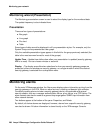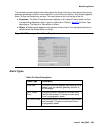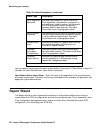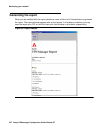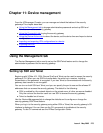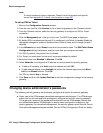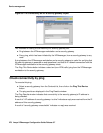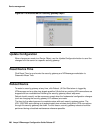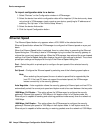
Issue 4 May 2005 275
Chapter 11: Device management
From the VPNmanager Console, you can manage and check that status of the security
gateways This chapter describes:
● Using the Management tab to change administrative passwords and set up SSH and
Telnet to connect to a security gateway
● Using the Connectivity tab to ping the security gateway
● Using the Device Actions tab to reboot the device, set the device time and import a device
configuration
● Importing and exporting VPN configurations to a device
● Exporting RADIUS
Using the Management tab
The Device>Management tab is used to set up the SSH/Telnet feature and to change the
administrator’s password for the security gateway.
Setting Up SSH and Telnet
Beginning with VPNos 4.31, SSH (Secure Shell) and Telnet can be used to access the security
gateway’s CLI. When you use SSH to transfer data, the entire log in session, including
transmission of the password, is encrypted. If you use Telnet to communicate with the security
gateway, data transfer is not encrypted.
You can turn on both SSH and Telnet, and you can specify the port to use and the allowed IP
addresses that can access the security gateway. The default is the following:
● SSH is enabled for Any network objects on the private zone, all other zones are disabled.
Only the root and the monitor users can use SSH to access the security gateway.
● Telnet is disabled on all zones.
Use the Device>Management tab to change the defaults and to configure or change the
security gateway SSH/Telnet feature.
When you log in to the security gateway using either SSH or Telnet, the security gateway’s CLI
interface is displayed. You can then use the CLI commands to troubleshoot the security
gateway. To use CLI commands see the VPNos Configuration Guide.




